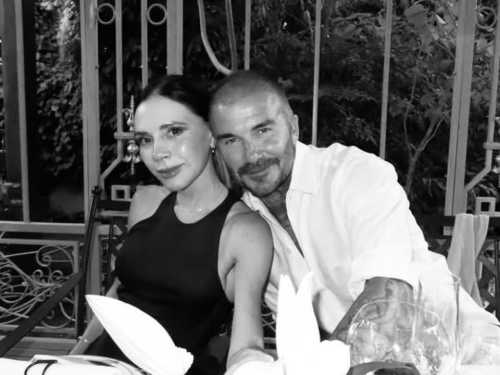
In the social sciences, the “etic” and the “emic” refer to the
methodologies that researchers tend to follow. The etic
approach is that of the cultural outsider, by which the researcher purposefully
maintains a distance from his or her subjects. The emic perspective
requires participation and, possibly, ingratiation: the researcher joins
in the rituals of the group, observes from within its ranks. The modern
American President, a role that has traditionally relied on a public
ethnography of sorts, has often appeared to steer emically: when he
extends such appeals as “we, the American people,” he means to include
himself within the crowd. Barack Obama, delivering the eulogy for the Reverend
Clementa Pinckney, one of the nine black Americans murdered by
Dylann Roof at the Emanuel A.M.E. Church, in Charleston, South Carolina*,
in June of 2015, seemed to have been spiritually prompted
to sing “Amazing Grace.” It was the picture of Presidential empathy.
Yesterday, as so often when compared to Obama, Donald Trump gave us an opposing show: an
image that perfectly sums up his Presidential indifference.
On Wednesday, seven days after the nineteen-year-old Nikolas Cruz walked
into his former high school, Marjory Stoneman Douglas, in Parkland,
Florida, and killed seventeen people with an AR-15, the White House
invited a select group of the survivors of that shooting, and of mass
shootings in Newtown, Connecticut, and at Columbine High School and in Aurora, Colorado, for
a “listening session.” A pastor
blessed the convening, which ran just over one wrenching hour.
Vice-President Mike Pence spoke, followed by the Secretary of Education, Betsy DeVos, who said that “something unthinkingly bad” had happened
and that it would be turned into “something good.”
Slumped in his chair, affecting meekness, Trump moderated the
discussion, which was more often an outcry of raw helplessness. The
voice of Andrew Pollack, whose eighteen-year-old daughter, Meadow, was
killed in the shooting, boomed in the room, as he spoke through visible
distress: “It should have been one school shooting, and we should have
fixed it, and I’m pissed because my daughter, I’m not going to see
again.” “You don’t want to be me,” Nicole Hockney, whose six-year-old
son, Dylan, died at Sandy Hook, said. Sam Zeif, who turned eighteen the day after his friend died at Parkland, said, turning red, “I don’t understand why I can
still go in a store and buy a weapon of war, an AR.”
Trump was red, too—ruddier than usual. Perhaps it was the result of his
recent trip to Florida, where he and First Lady Melania Trump had
visited the hospital where Parkland victims were recovering, and managed
some photo ops. On Monday, a motorcade carried the President and his
convoy to his golf course while, less than fifty miles away, pallbearers
carried the caskets of Alaina Petty and Luke Hoyer to their funerals.
Fixers may have gotten their client into the “listening session,” but
they could not get him to play the role of the interested, let alone the
aggrieved. Carolyn Kaster, a photographer for the A.P., caught the
President fiddling with White House stationery on which a list of cues had been written for him.
Further Reading
New Yorker writers respond to the Parkland school shooting.
The exactitude of Kaster’s zoom heightens the strenuousness that the
image, which went instantly viral, records. It is an image of morbid clumsiness:
“45” is stitched onto the shirt cuffs of a man who has not thought even to hide his notes—a list of five questions any interviewer would
scoff at for being absurdly general for any circumstance. No. 1: “What
would you most want me to know about your experiences?” A second
photograph clarified two more of the entries, which had been obscured by
Trump’s fingers: “What can we do to help you feel safe?” and “resources?
ideas?” The final item on the list was the most prominent: “I hear you.”
It is not news that Trump has an essential inability to lead,
cerebrally, morally, in times of crisis. What must routinely frighten us
is that he needs to be provided with basic cues to convincingly play the
human in relation to any person who is not himself. He brought these victims
to his citadel, and, even there, could not be trusted to feign
control, to pretend to be compassionate. There is something
particularly disturbing about the bubble-like handwriting on the note,
which is likely not his, and which is grotesquely reminiscent of the
longhand of a high-school kid.
Over the phone, the historian Sean Wilentz told me
that the notion of the President as empath began to shape the populace’s
expectations with F.D.R. “With the Great Depression, one of the things
that Roosevelt managed to do so well was to heal its traumas and that of
the Second World War. He was very conscious of how to do that.” he said. “It begins
with his first Inaugural.” In his 1933 address, F.D.R. said, “If I read
the temper of our people correctly, we now realize as we have never
realized before our interdependence on each other.” Confronted with
meeting the public’s emotional pitch, leaders have often faltered.
(“Message: I care,” George H. W. Bush told voters angered by the
economy’s instability in New Hampshire, in 1992.) And yet a kind of
emotional intelligence has been essential even for Trump, whose
jingoistic invocations created a fever in his base. The shooting, or the deportation of Muslims, or the violence of white
supremacists, just does not move him.
The President sets the tone. In a barrage of tweets this morning, he
seemed to grow increasingly excited by his own rhetorical flourishes—“Savage Sicko”
for mass shooters; “ATTACKS WOULD END!” he wrote, if “highly trained
teachers” were armed in classrooms. An alt-right Internet campaign is
currently pushing the conspiracy theory that David Hogg, a teen-age
Parkland journalist who has, in the blur of a single, heartbreaking
week, become an eloquent activist for gun control, is actually a paid
actor. How ironic, then, that it is the President who seems
unbelievable.
*A previous version of this post misstated the state where the Emanuel A.M.E. Church shooting took place.
Sourse: newyorker.com






